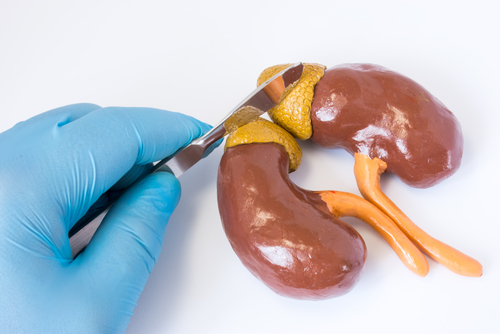Researchers Report Rare Case of Cushing’s Caused by Bilateral Adrenal Tumors
Written by |

Cases of adrenocorticotropic hormone (ACTH)-independent Cushing’s syndrome are often caused by unilateral tumors in the adrenal glands, but Indian researchers have now reported a rare case where the condition was caused by tumors in both adrenal glands.
Fewer than 40 cases of bilateral tumors have been reported so far, but an accurate diagnosis is critical for adequate and prompt treatment. Sampling the veins draining the adrenal glands may be a good way to diagnose the condition, researchers said.
The study, “Bilateral adrenocortical adenomas causing adrenocorticotropic hormone-independent Cushing’s syndrome: A case report and review of the literature,” was published in the World Journal of Clinical Cases.
Cushing’s syndrome, a condition characterized by excess cortisol in circulation, can be divided into two main forms, depending on ACTH status. Some patients have tumors that increase the amount of ACTH in the body, and this hormone will act on the adrenal glands to produce cortisol in excess. Others have tumors in the adrenal glands, which produce excess cortisol by themselves, without requiring ACTH activation. This is known as ACTH-independent Cushing’s syndrome.
Among the latter, the disease is mostly caused by unilateral tumors — in one adrenal gland only — with cases of bilateral tumors being extremely rare in this population.
Now, researchers reported the case of a 31-year-old Indian woman who developed ACTH-independent Cushing’s syndrome because of tumors in both adrenal glands.
The patient complained of weight gain, red face, moon face, bruising, and menstrual irregularity for the past two years. She recently had been diagnosed with high blood pressure and had started treatment the month prior to the presentation.
A physical examination confirmed obesity in her torso, moon face, buffalo hump, thin skin, excessive hair growth, acne, swollen legs and feet, and skin striae on her abdomen, arms, and legs.
Laboratory examinations showed that the woman had an impaired tolerance to glucose, excess insulin, and elevated cortisol in both the blood and urine. Consistent with features of Cushing’s syndrome, cortisol levels had no circadian rhythm and were non-responsive to a dexamethasone test, which in normal circumstances lowers cortisol production.
Because ACTH levels were within normal levels, researchers suspected an adrenal tumor, which led them to conduct imaging scans.
An abdominal computed tomography (CT) scan showed adrenal adenomas in both adrenal glands (right: 3.1 cm × 2.0 cm × 1.9 cm; left: 2.2 cm × 1.9 cm × 2.1 cm). A magnetic resonance imaging (MRI) scan showed that the pituitary gland (which normally produces ACTH) was normal.
To determine whether both adrenal tumors were producing cortisol, researchers sampled the adrenal veins and compared their cortisol levels to those of peripheral veins. They found that the left adrenal gland was producing higher amounts of cortisol, thought the right adrenal gland was also producing cortisol in excess.
“Our case indicates that adrenal vein [blood] sampling might be useful for obtaining differential diagnoses” in cases of Cushing’s syndrome, researchers stated. Also, they may help design a surgical plan that makes much more sense.”
The tumors were surgically removed — first the left, and three months later the right — which alleviated many of her symptoms. She also started prednisolone treatment, which helped resolve many disease symptoms.
“Bilateral cortisol-secreting tumors are a rare cause of Cushing’s syndrome,” researchers said. So when patients present bilateral adrenal lesions, “it is crucial to make a definitive diagnosis before operation since various treatments are prescribed for different causes,” they said.
The team recommends that in such cases the two tumors should not be removed at the same time, as this approach may cause adrenal insufficiency and the need for glucocorticoid replacement therapy.





